With dining lockdowns firmly back in place, I can only reflect and reminisce about a wonderful Omakase dining experience at Sushi Mamoru. Sushi Mamoru is a minimalist, sanctuary-like space designed by M.R. Studio and only seats 12 patrons. As such, reservations are very highly sought after and were very excited for our dining experience.
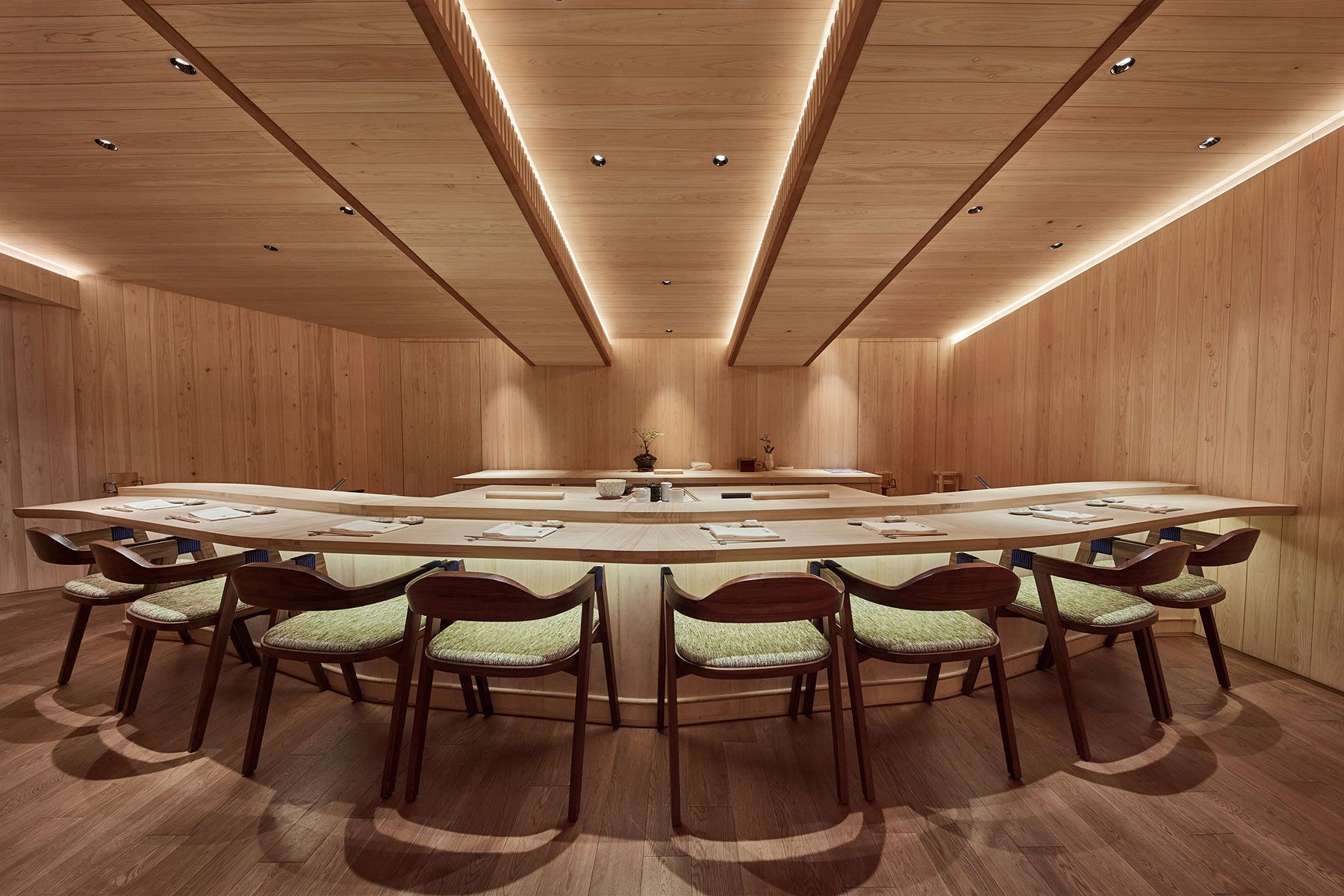
With Chef Hirofumi Chiba at the helm, Chef Chiba brings a Mastery of sushi customs and traditional ingredients rarely found outside of Japan. Chef Chiba is a third-generation sushi master from the Yamagata Prefecture, working from his grandfather's sushi restaurant to renowned institutions like Tsukiji Sushi Iwa and Zorokuzushi Minami in Tokyo.
Mamoru means "to protect" in Japanese and represents Chef Chiba's commitment to bring forth and safeguard centuries-old sushi making traditions from some of the most respected and oldest Japanese institutions.
Chef Chiba specialises in traditional Edomae-style sushi and uses hand-blended and aged Hokkaido rice and Wasabi from the famous Shizuoka-based farmer Keiichi Tashiro. There is such artistry and attention to detail as each piece is so carefully presented to you.
The first sushi piece presented was the Akagai, Ark Shell Clam from Yuriage of Natori City in the Miyagi Prefecture. Akagai is also known as Blood or Red Clam and is one of my favourite, as you have probably seen in my other posts. Ark Shell is a classic Edomae style sushi and is a shellfish found in Edo bay. Akagai is washed in vinegar water, carefully sliced and butterflied upon serving. The sushi chef will often slam the Akagai onto the cutting board to further tighten the fish, releasing deliciously sweet umami flavours.
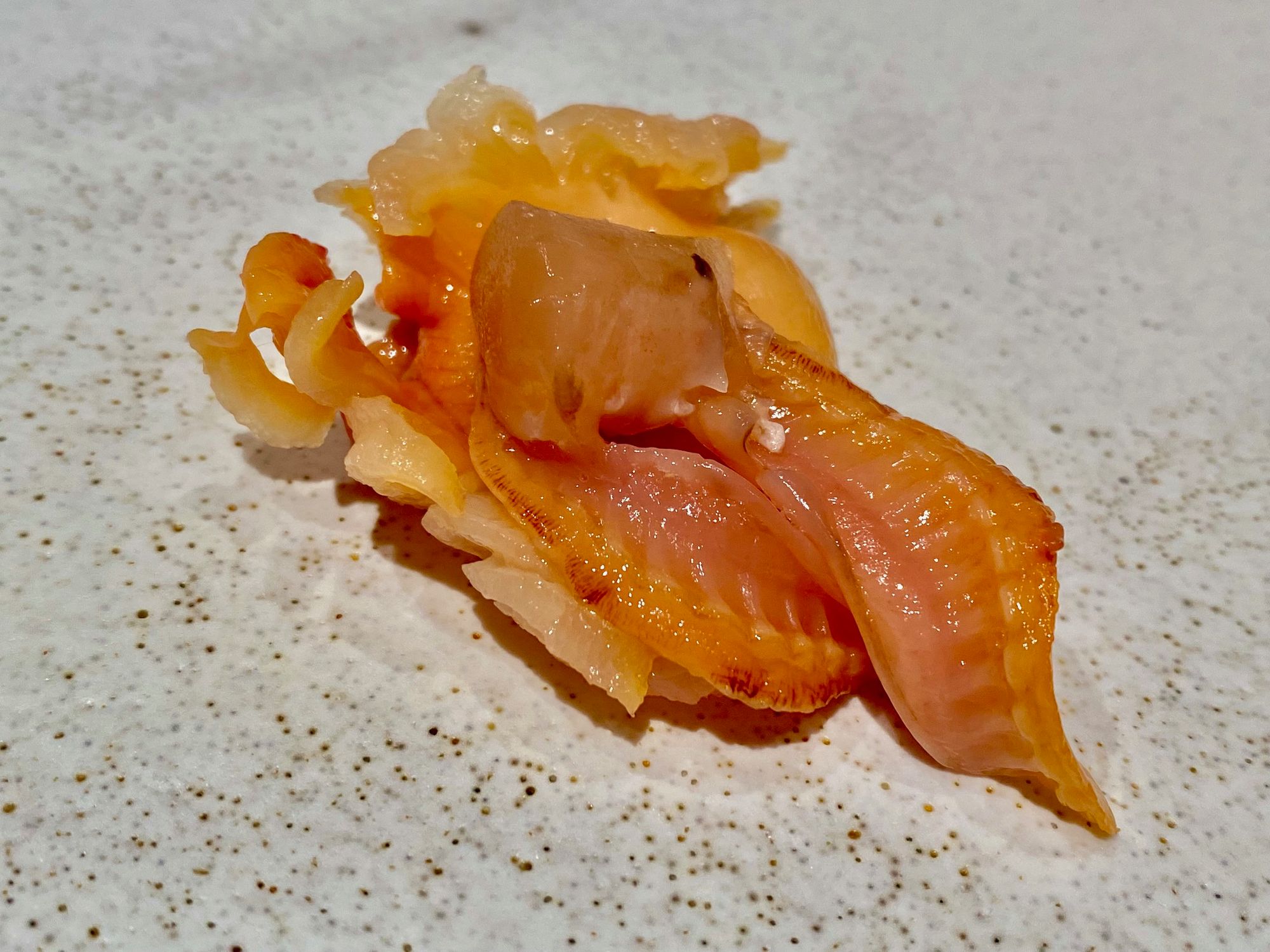
Lightly seared White Amadai was served next, a rare delicacy. There are three types of Amadai with skin that is Red, Yellow and White. The white Amadai is more rare than the others and these pieces were lightly marinated with sea salt. Following the Amadai, a small steamed egg dish, Chawanmushi was brought out.
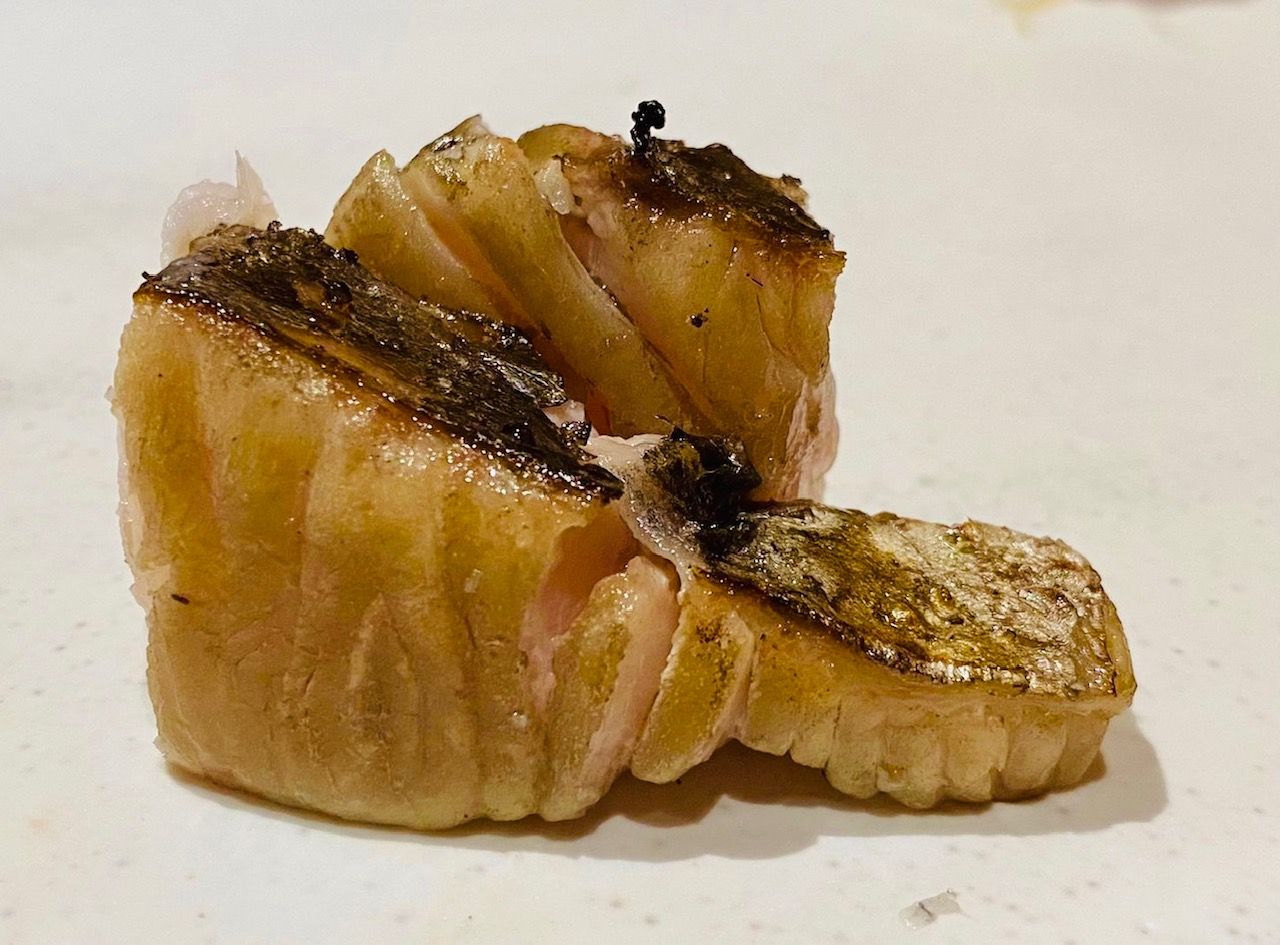
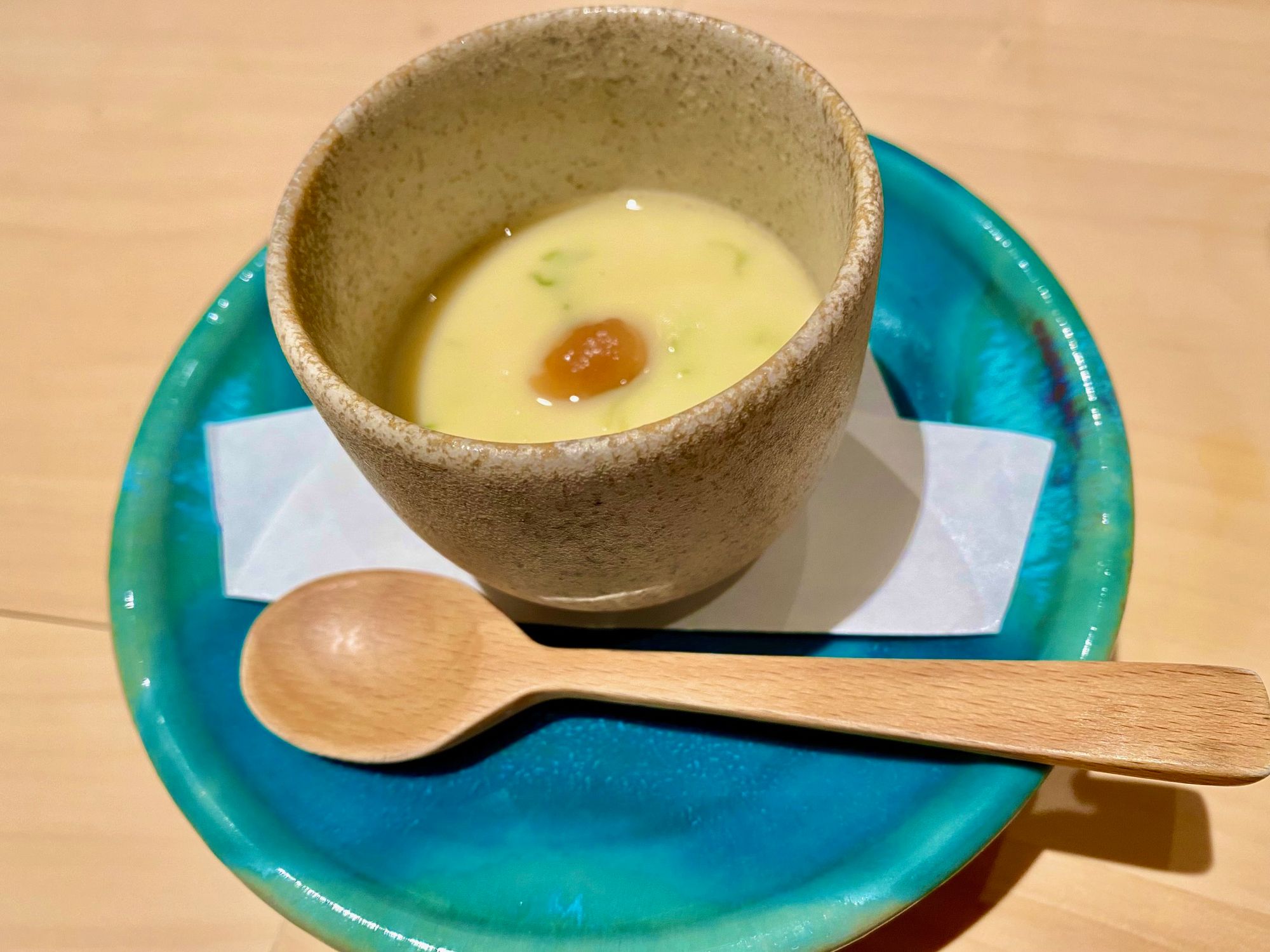
Next up was the Miyagi oyster, known as one of the tastiest oysters in the world. These oysters are from the Miyagi prefecture, where the Sanriku Coast meets the sea and is the second largest oyster region in Japan after Hiroshima. The mix of warm and cold currents there provides a wonderful and nurturing environment for these oysters. One bite in I was sold, the texture was so creamy and full of flavour, even more so than my favourite Kumamato oysters. More please!
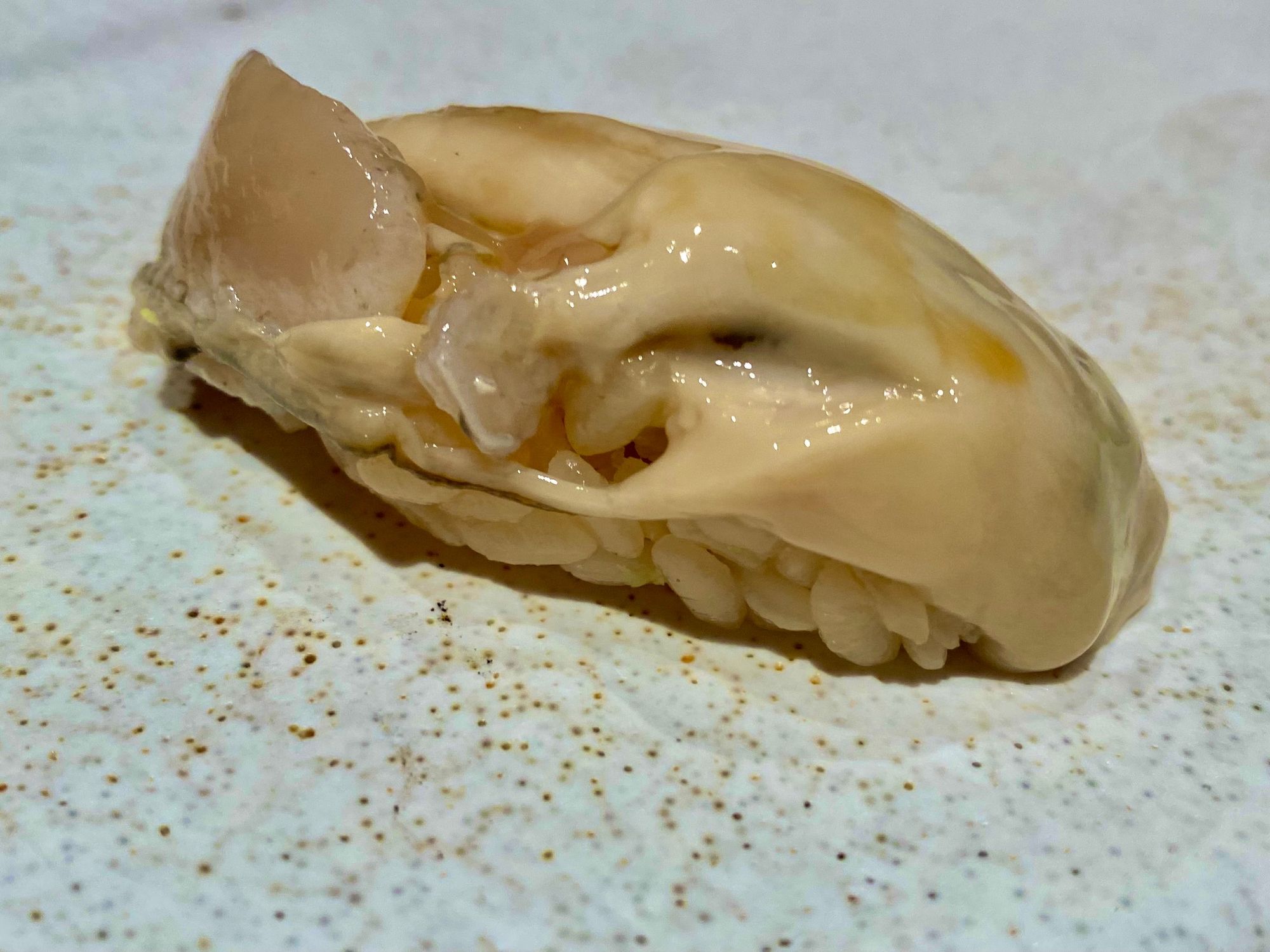
Following the oyster was a lovely piece of Aji (Horse Mackerel) from Kagoshima, served with freshly grated ginger and scallions. This type of wild caught Horse mackerel grows up in coastal bays and attains a golden colour and round form. Aji has moderate fat content and very high quality flesh with a delicious sweetness.
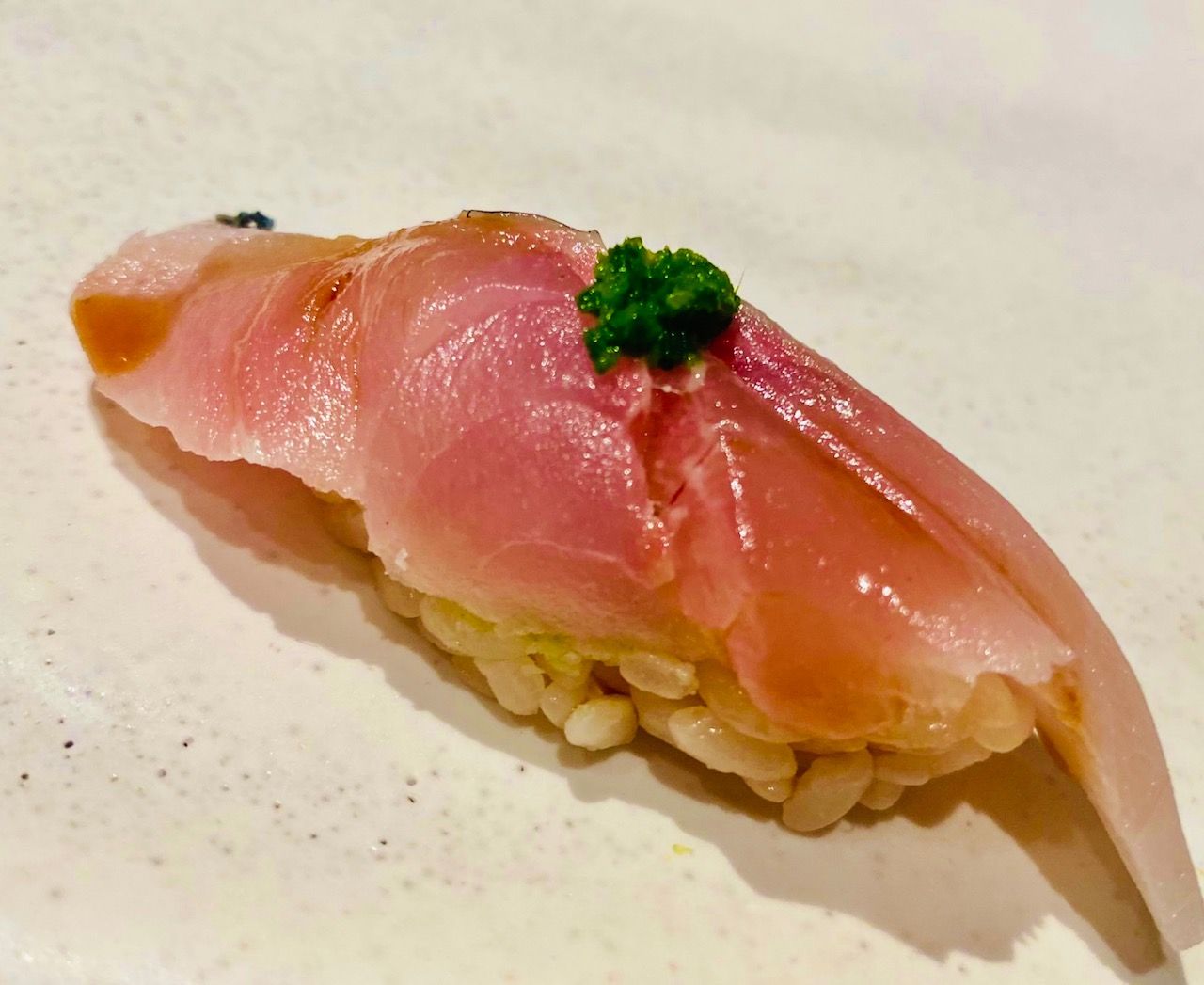
A shimmering silver skinned Kohada from Fukuoka, also known as a Gizzard Shad, was served next. The Kohada has a rich taste of umami with both a sweet and acidic taste. Some often say that the Kohada tastes like a much lighter and more refined sardine. The preparation requires that the fish be filleted, deboned, washed with water, salted, rinsed with and marinated in vinegar for an extended period of time. Serving Kohada requires a well-skilled and experienced sushi chef as the fish size, fat content, and weather conditions are used to determine how long to salt and marinate. I loved both the Kohada's smooth silver skin and meat texture.
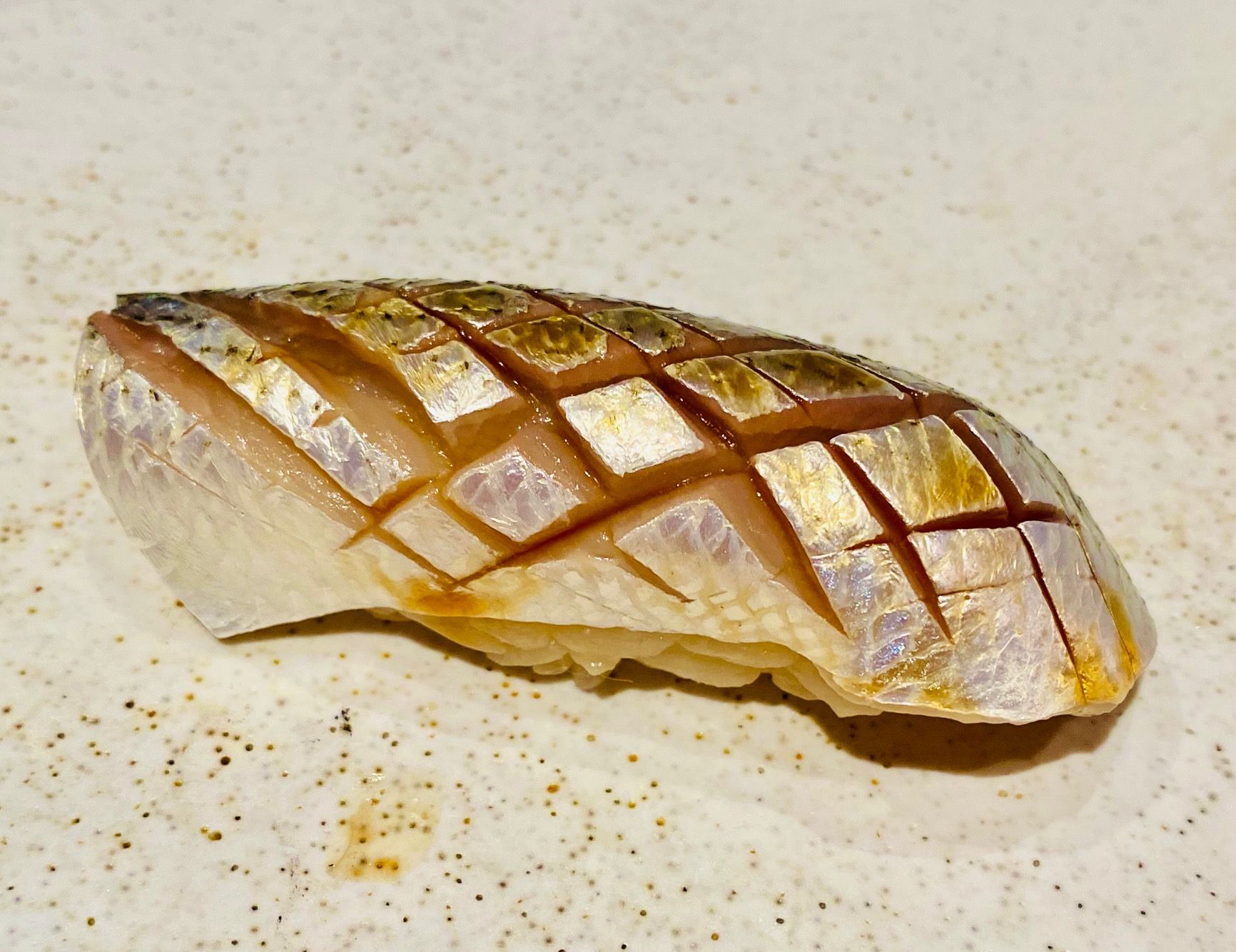
A crimson red piece of Chu Toro (medium fatty tuna, middle back) arrived next followed by the Kagoshima Swordtip Squid and the Baby Squid tentacles. The squid tentacles were dressed with a rich Anago sauce, made from simmering a mixture of salt water eel broth, soy sauce, sake and sugar. It had a nice crunchy yet juicy texture and paired well with the rich Anago sauce.
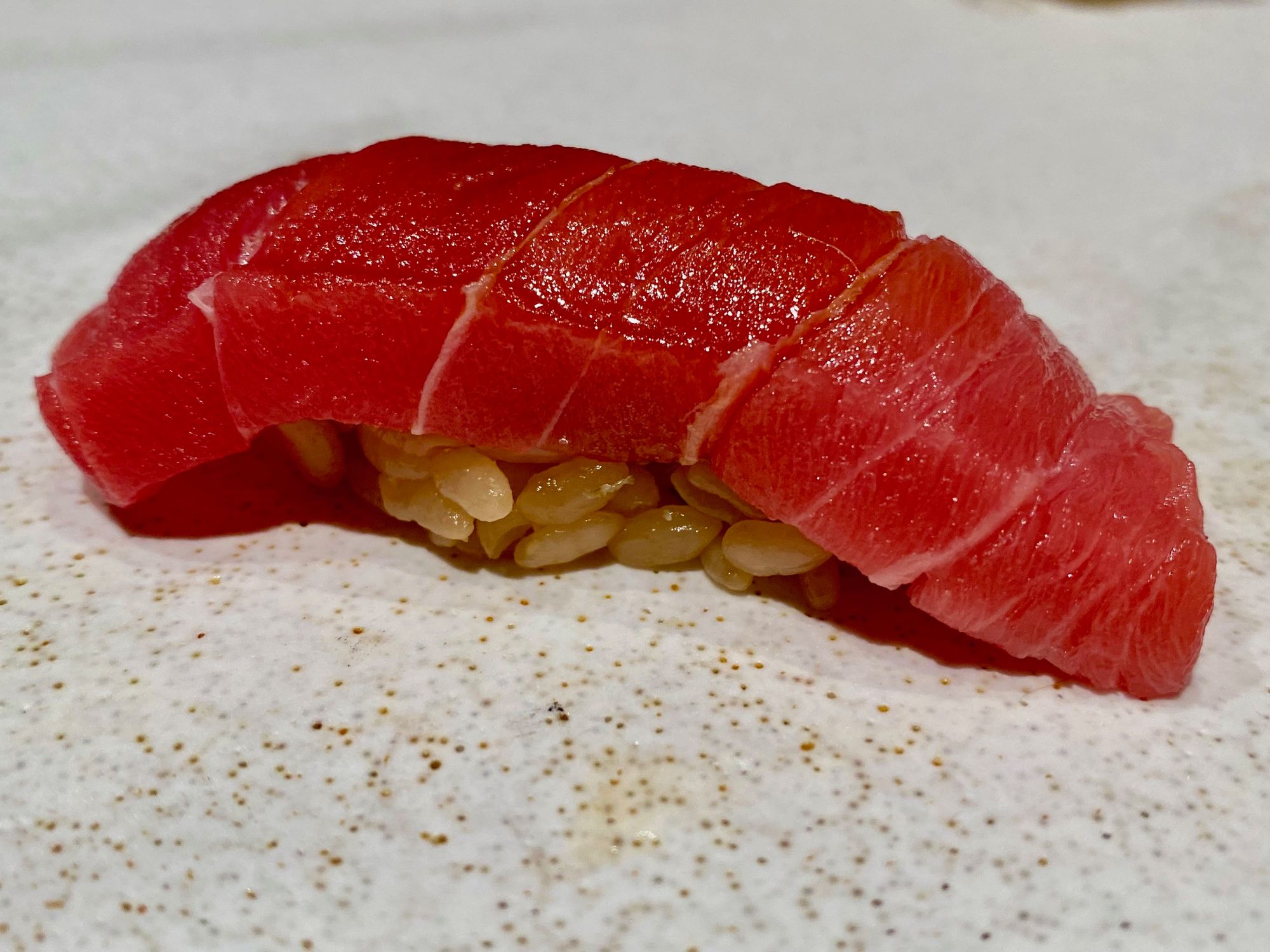
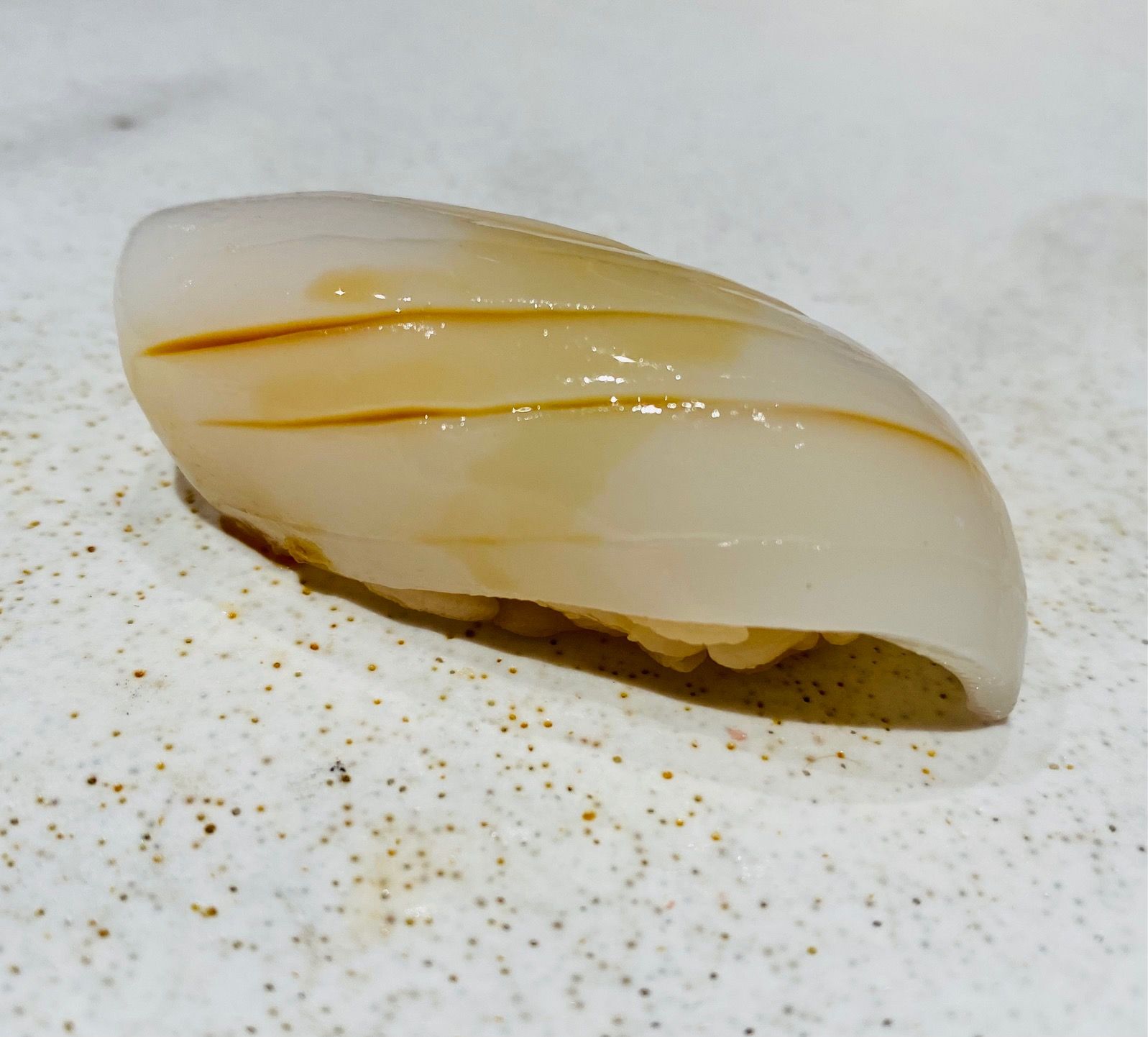
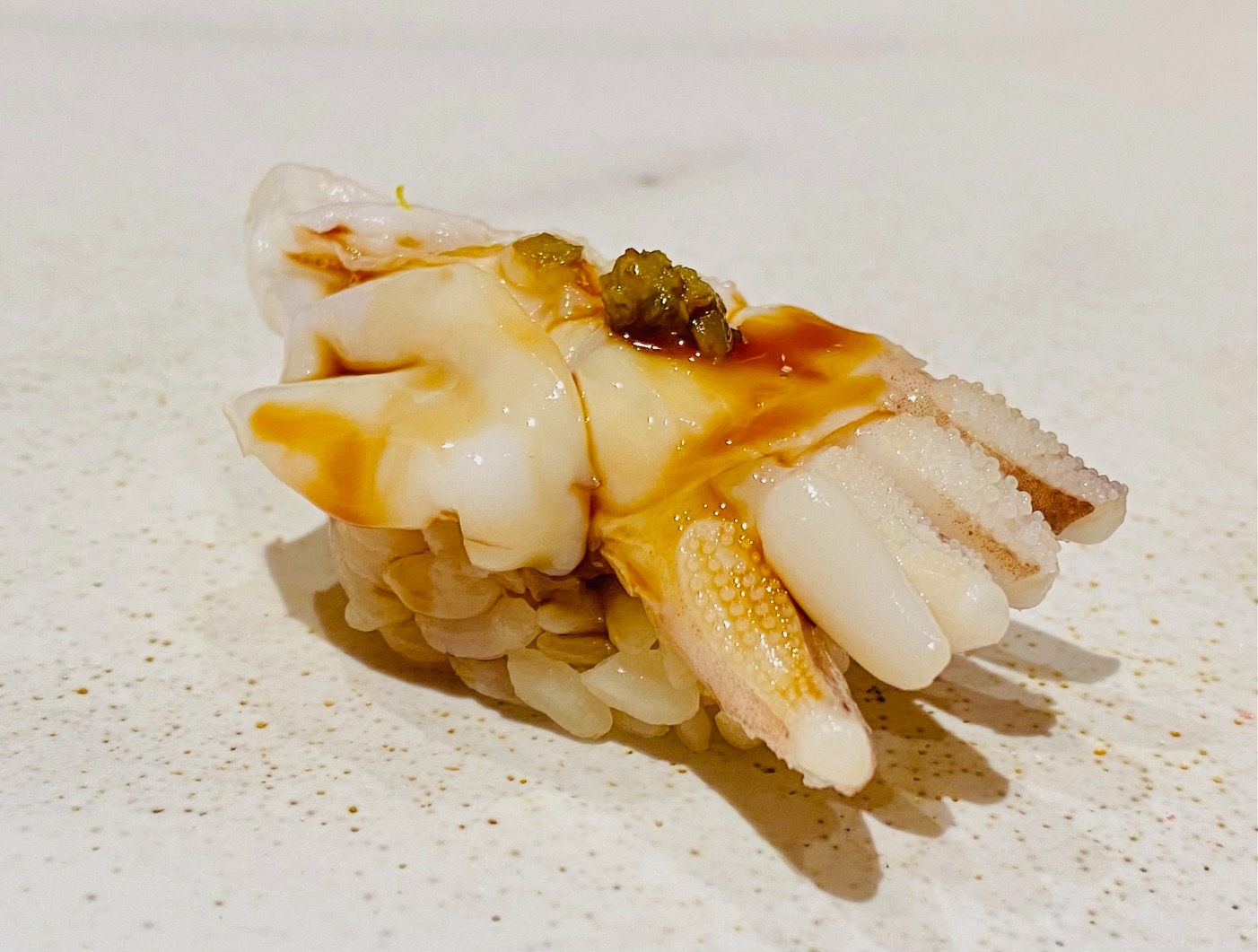
Just when you think you may have eaten enough, a few more pieces arrive; Hokkaido Ikura (Salmon Roe), Hokkaido Uni and Toyama Shiro Ebi, one of the sweetest shrimp I have tasted in awhile. The tiny shrimp are sandwiched between sheets of Kombu for four hours and served with soy sauce and Sudachi.
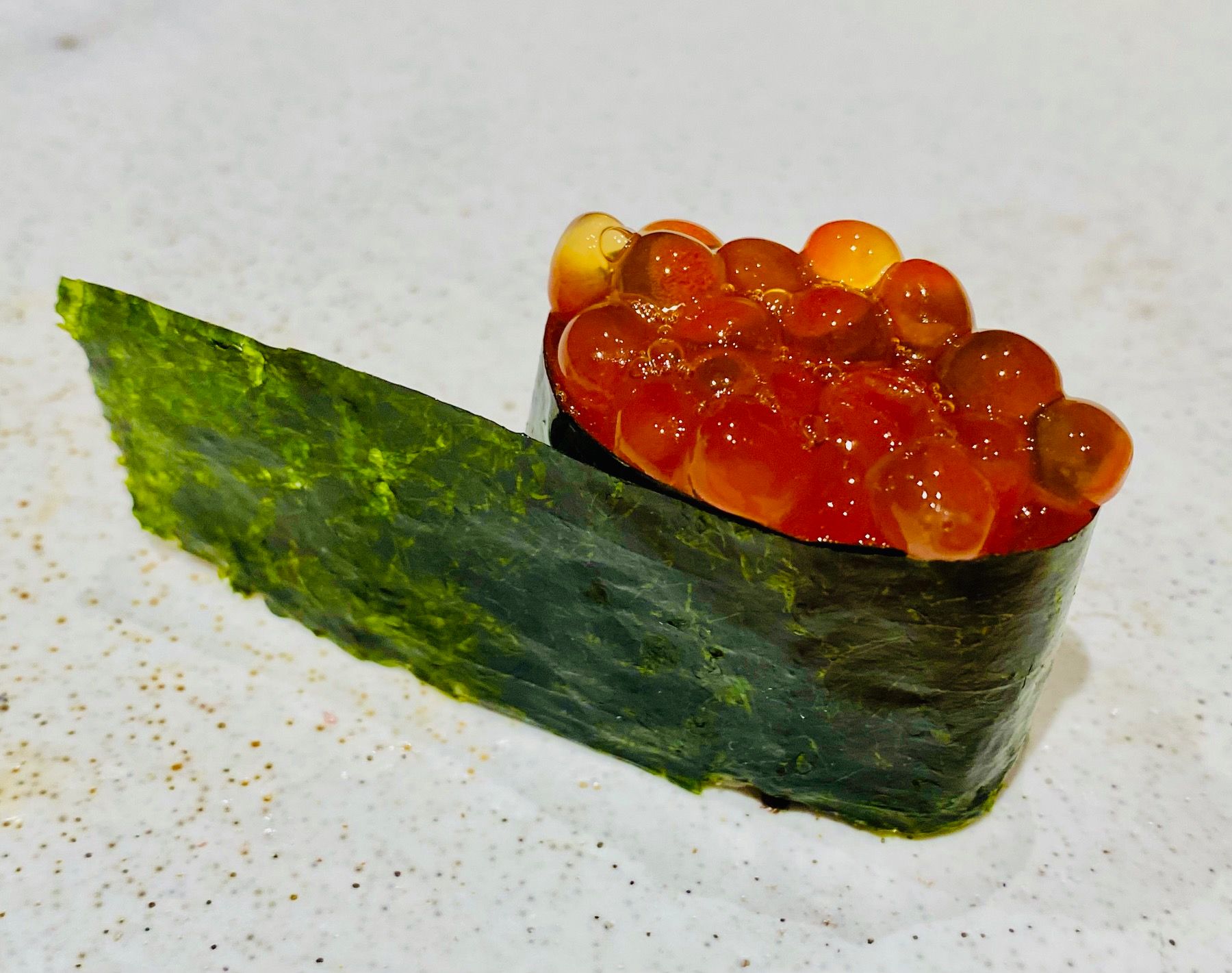
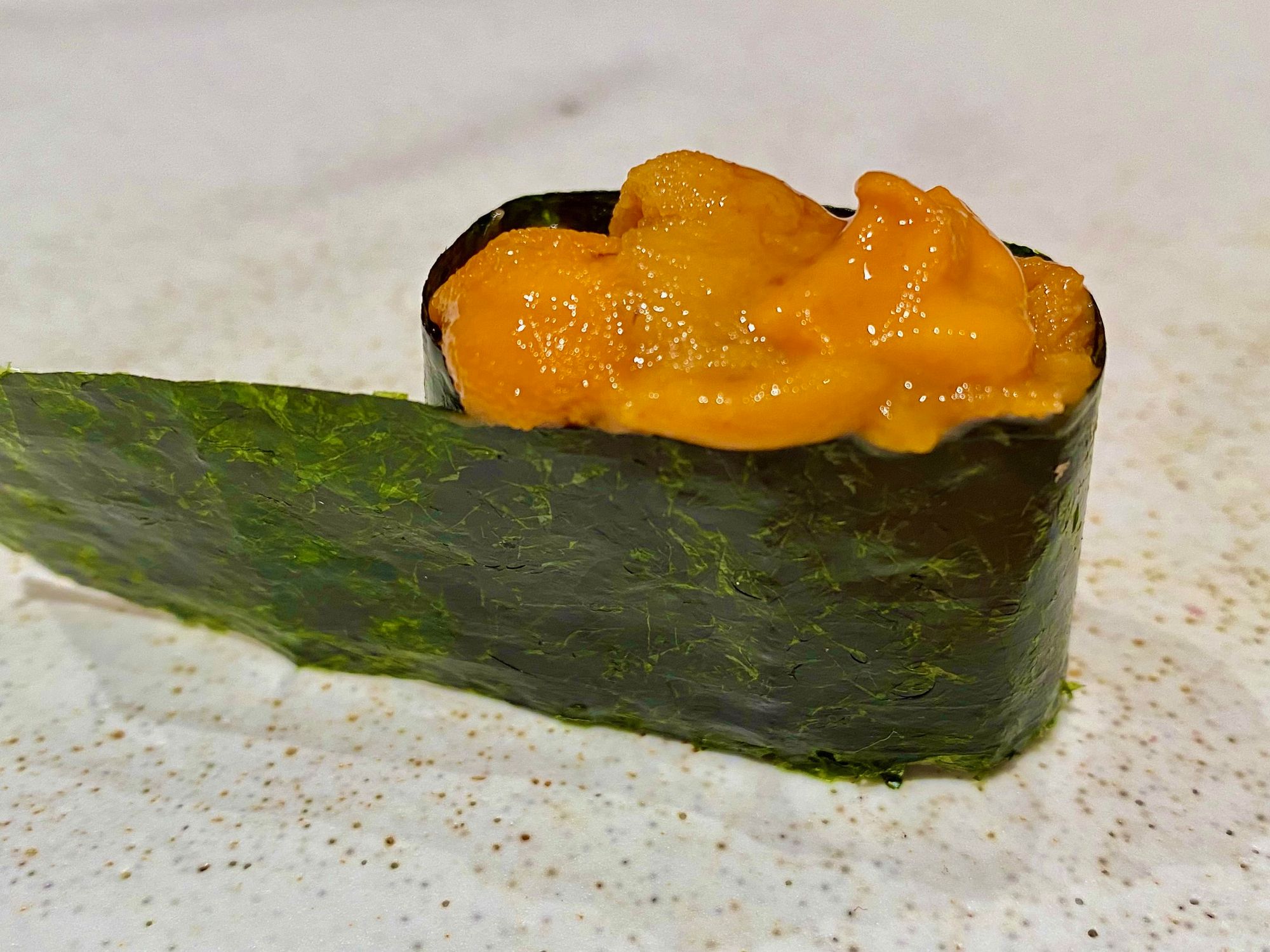
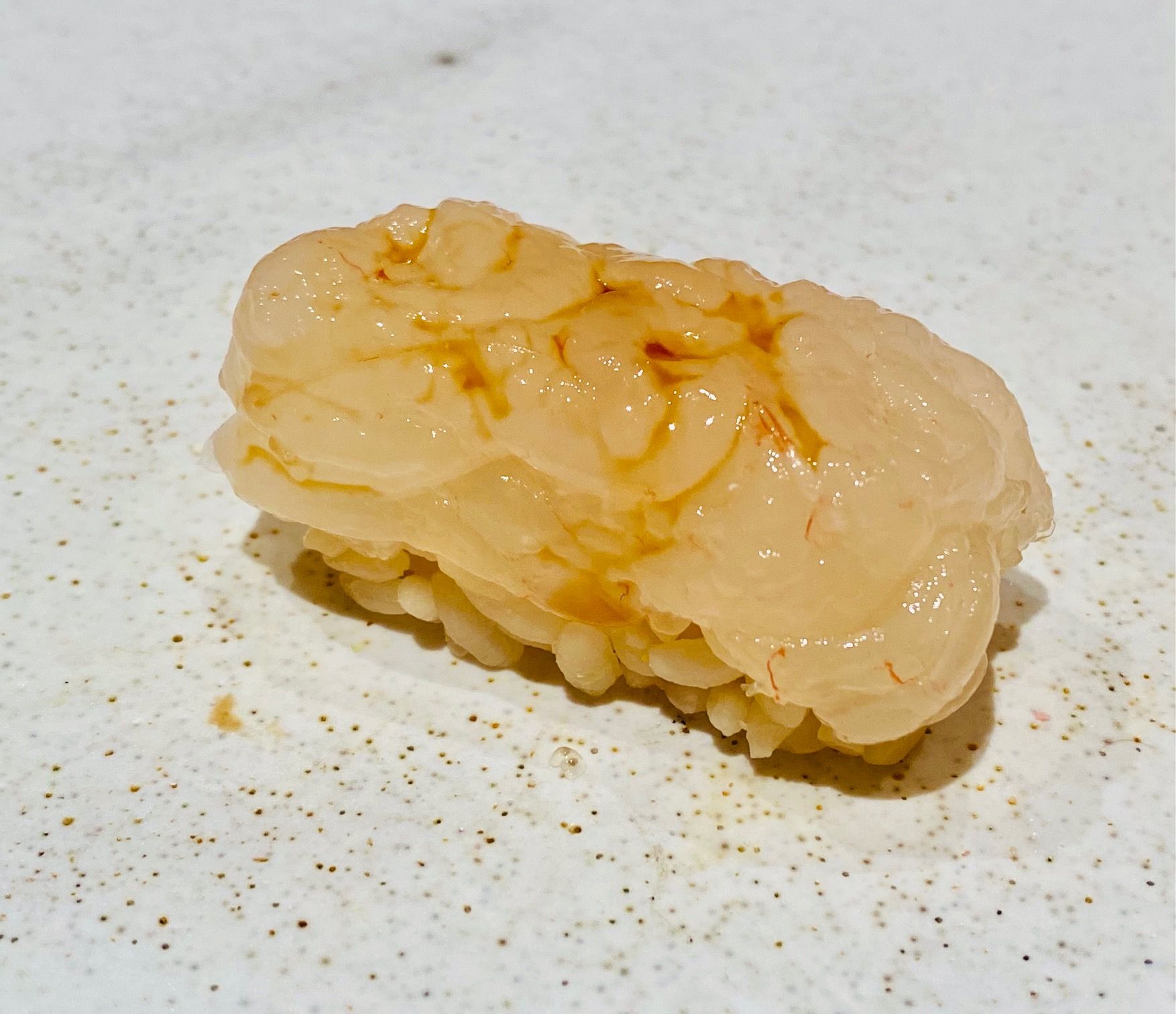
And finally last but not least the cooked dishes; Anago (Salt water eel) with Caviar sauce and a lovely thick broth with egg drops which I cannot seem to recall the name of.
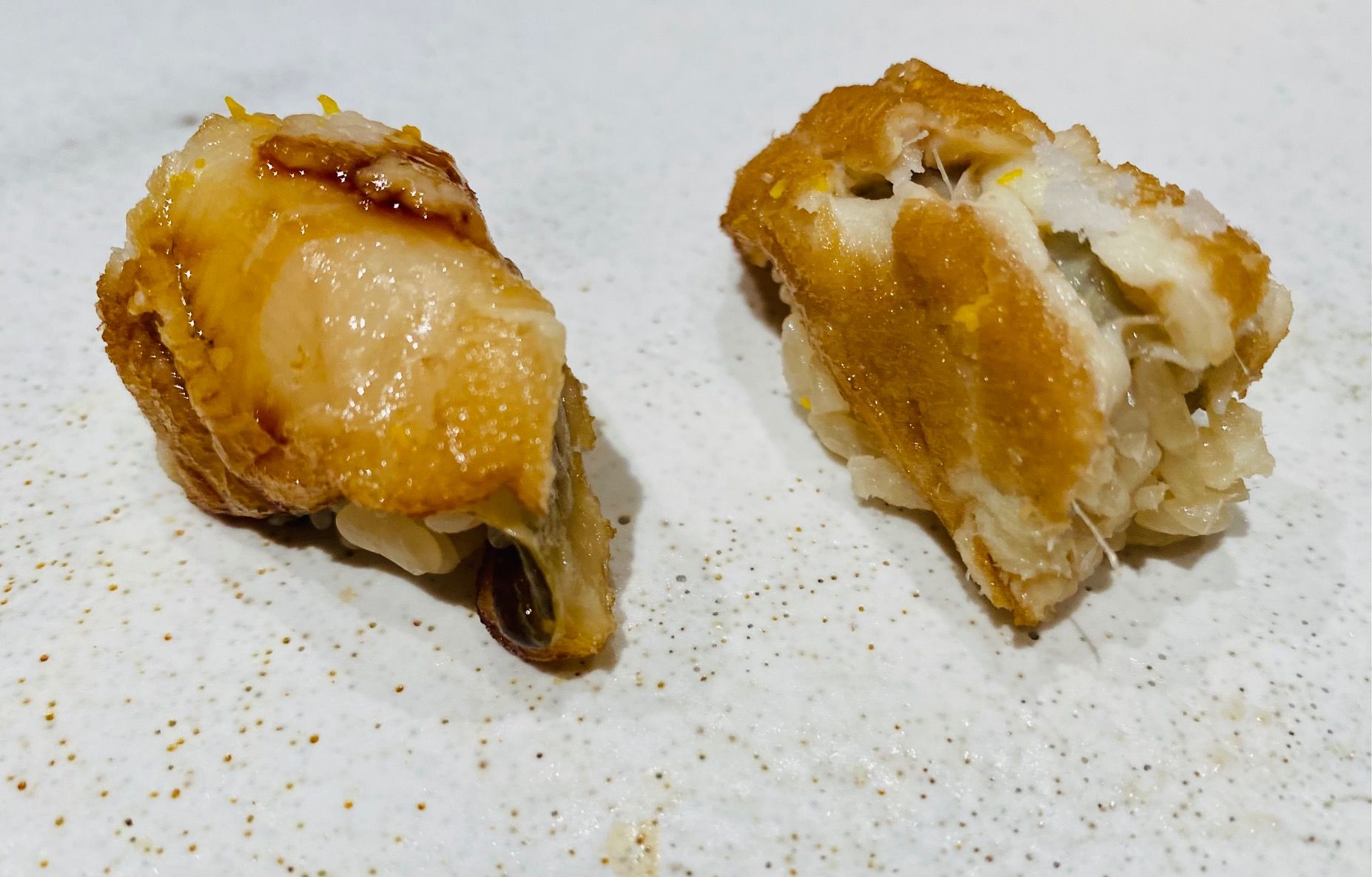
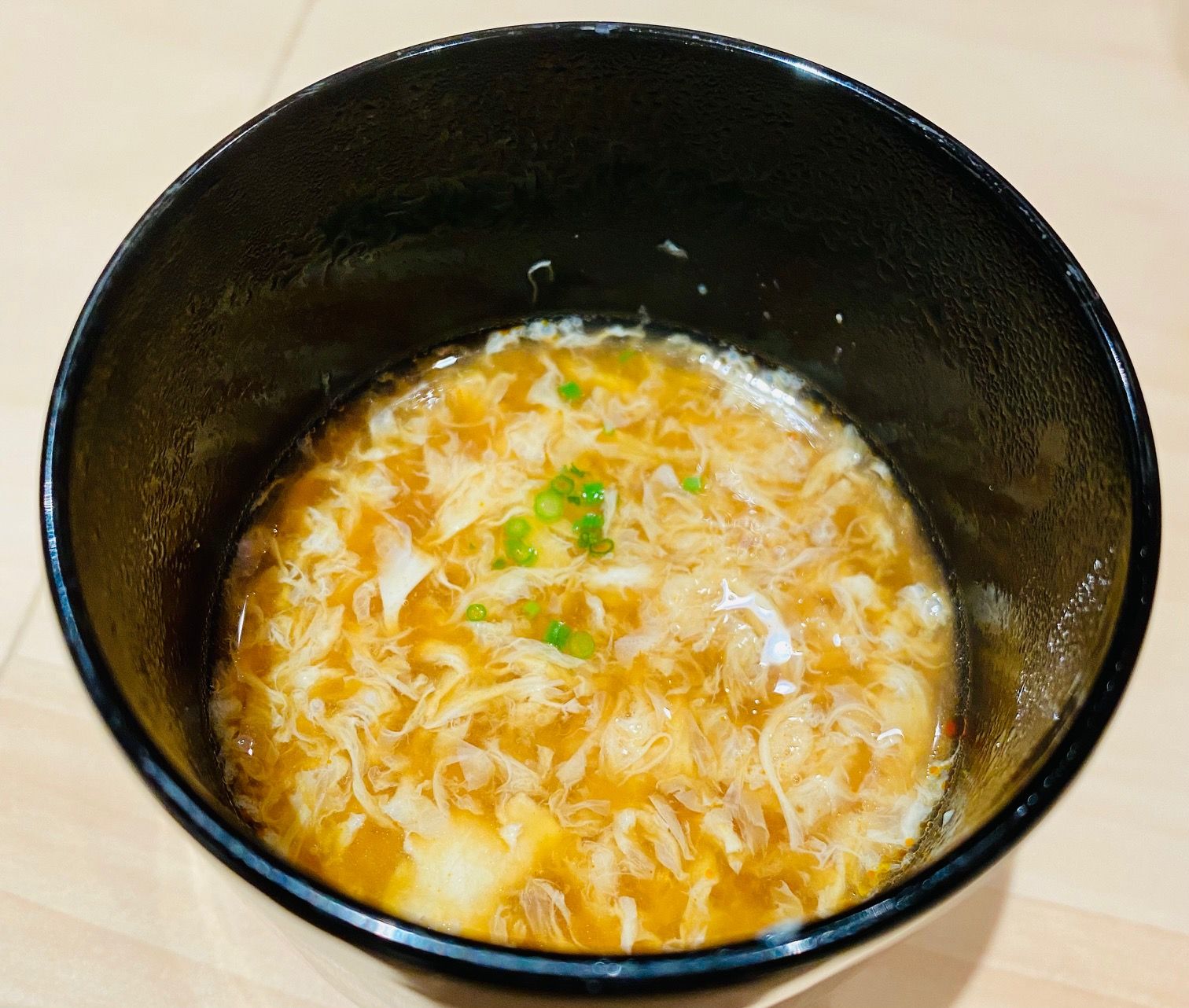
And for the finale, a smooth Matcha Green Tea Pudding was served to round out the experience.
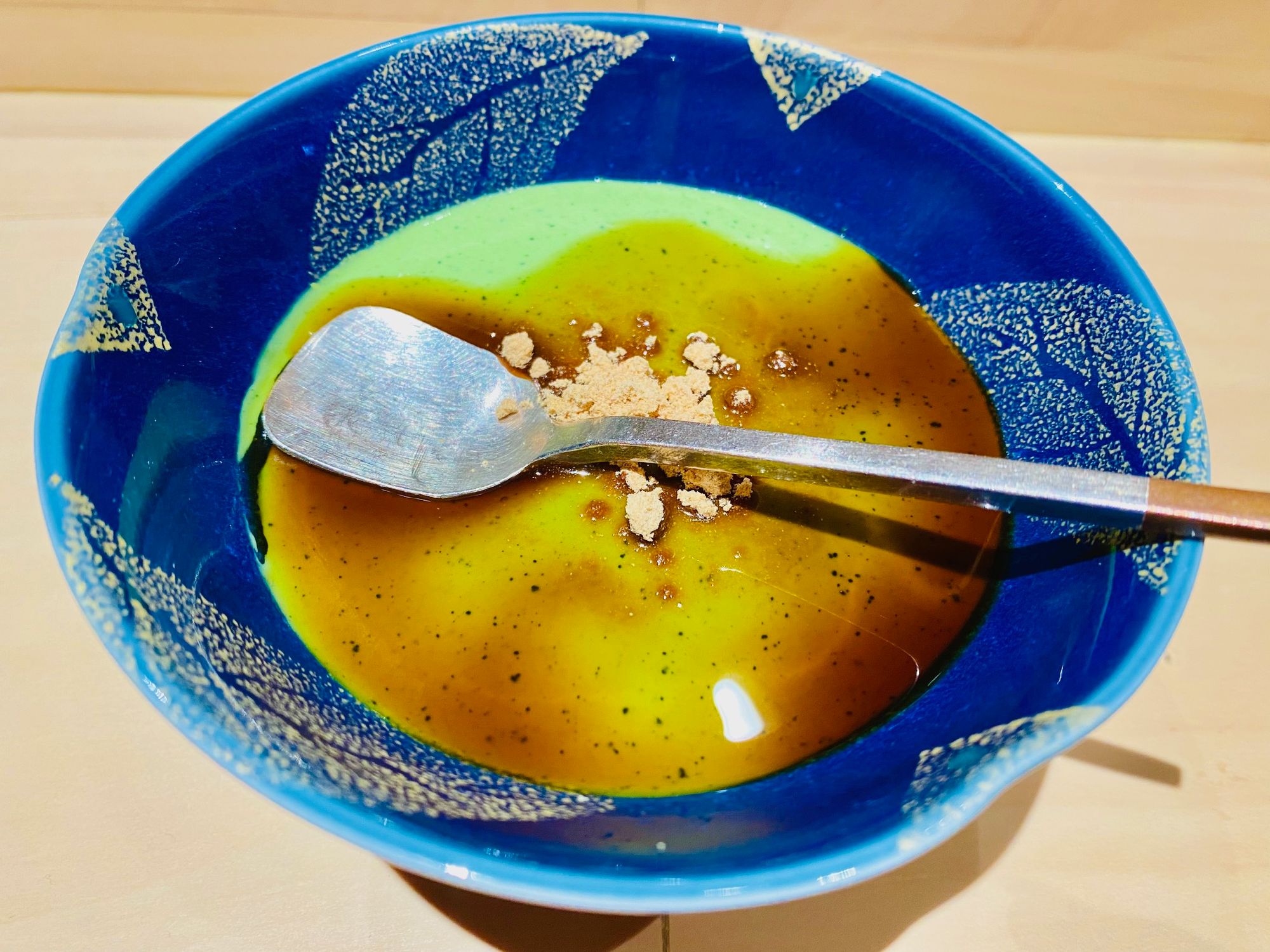
I would happily return to Sushi Mamoru for the Omakase experience. For now, the tasty memories shall tie my belly over until we can return again.
LOCATION
Sushi Mamoru
Shop 2 Ground Floor
32 Oi Kwan Road
Wan Chai Hong Kong
(Drop off Yat Sin Street)
HOURS
Please call restaurant for latest opening hours.
RESERVATION
Four to Six month advanced booking required by phone at +852 21335700, or by email.
MOST RECENT VISIT
7 December 2021